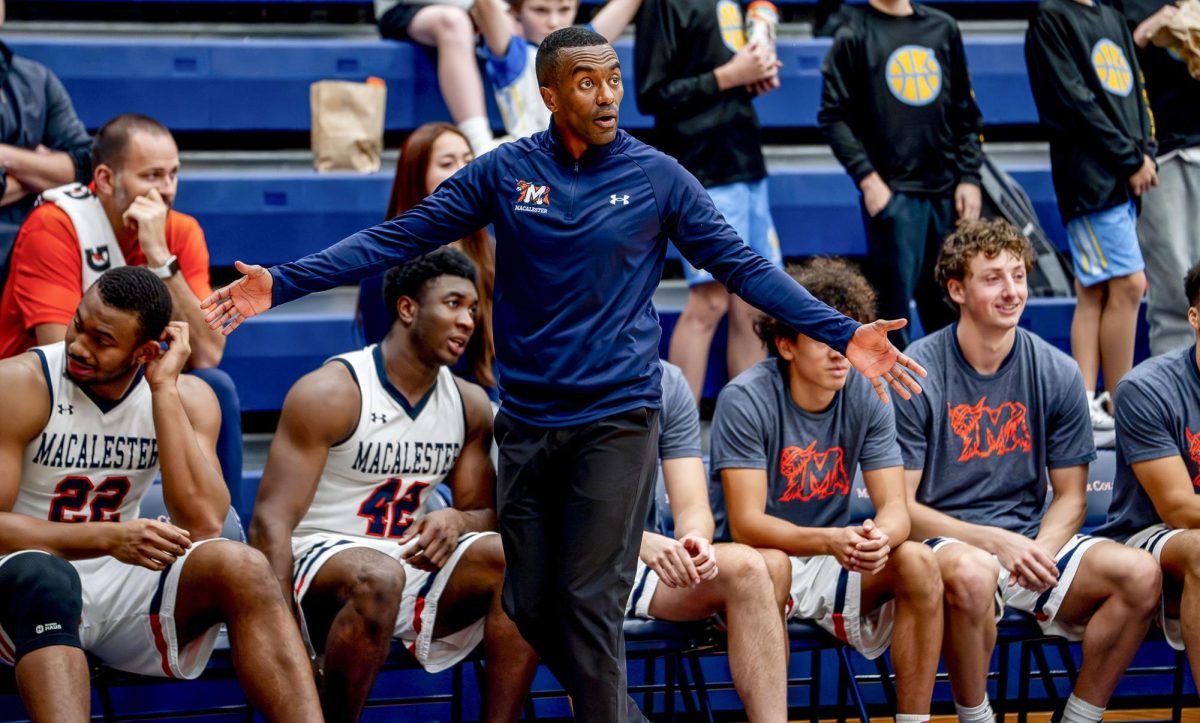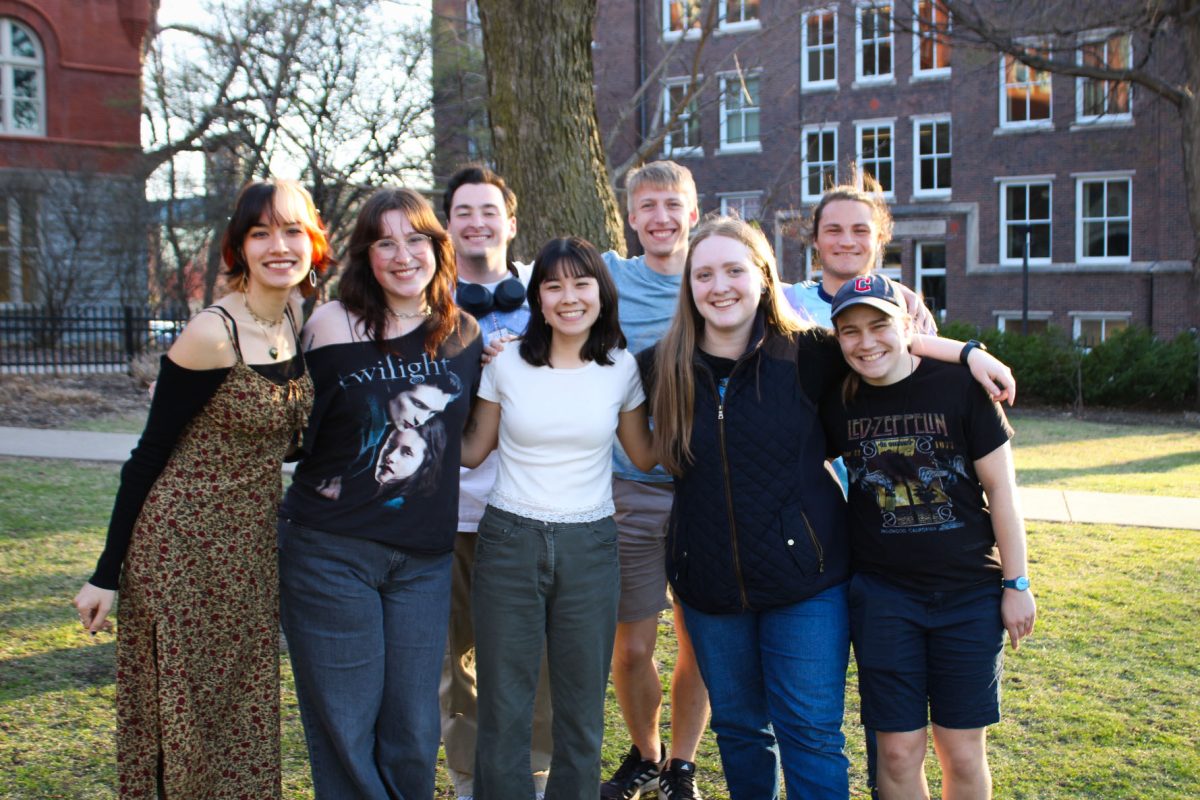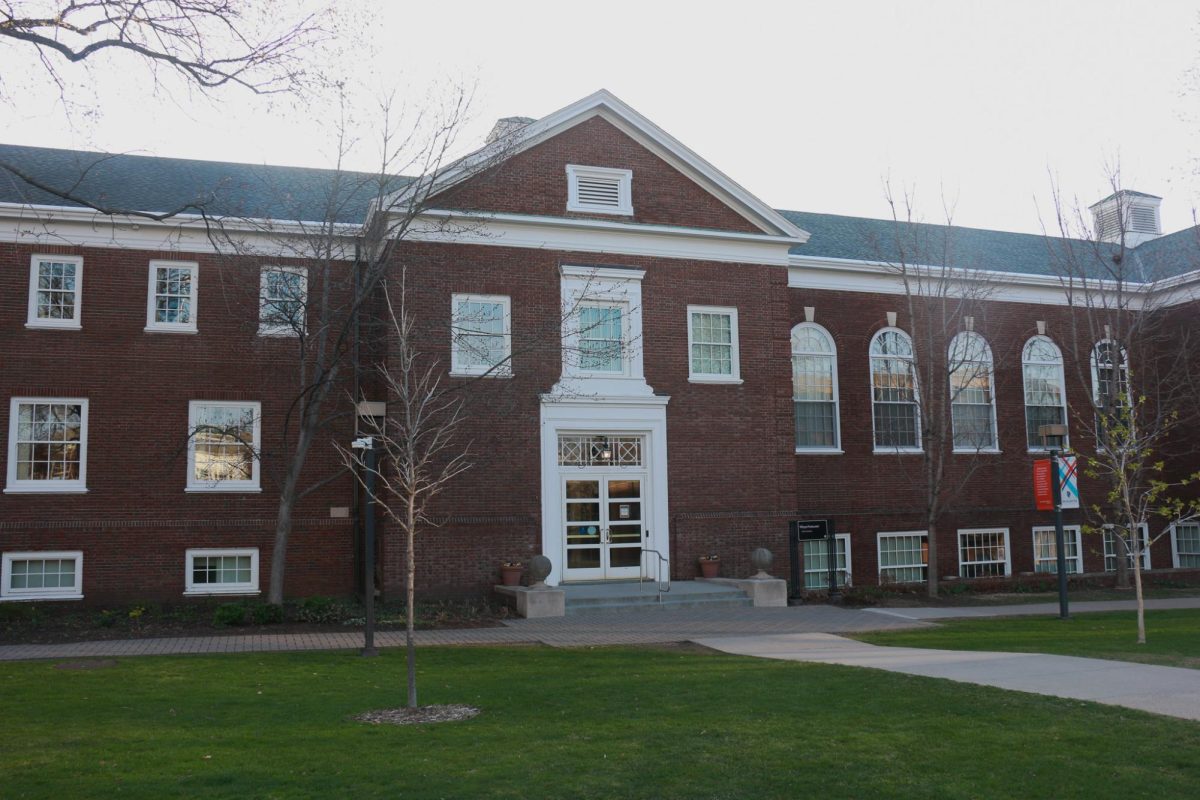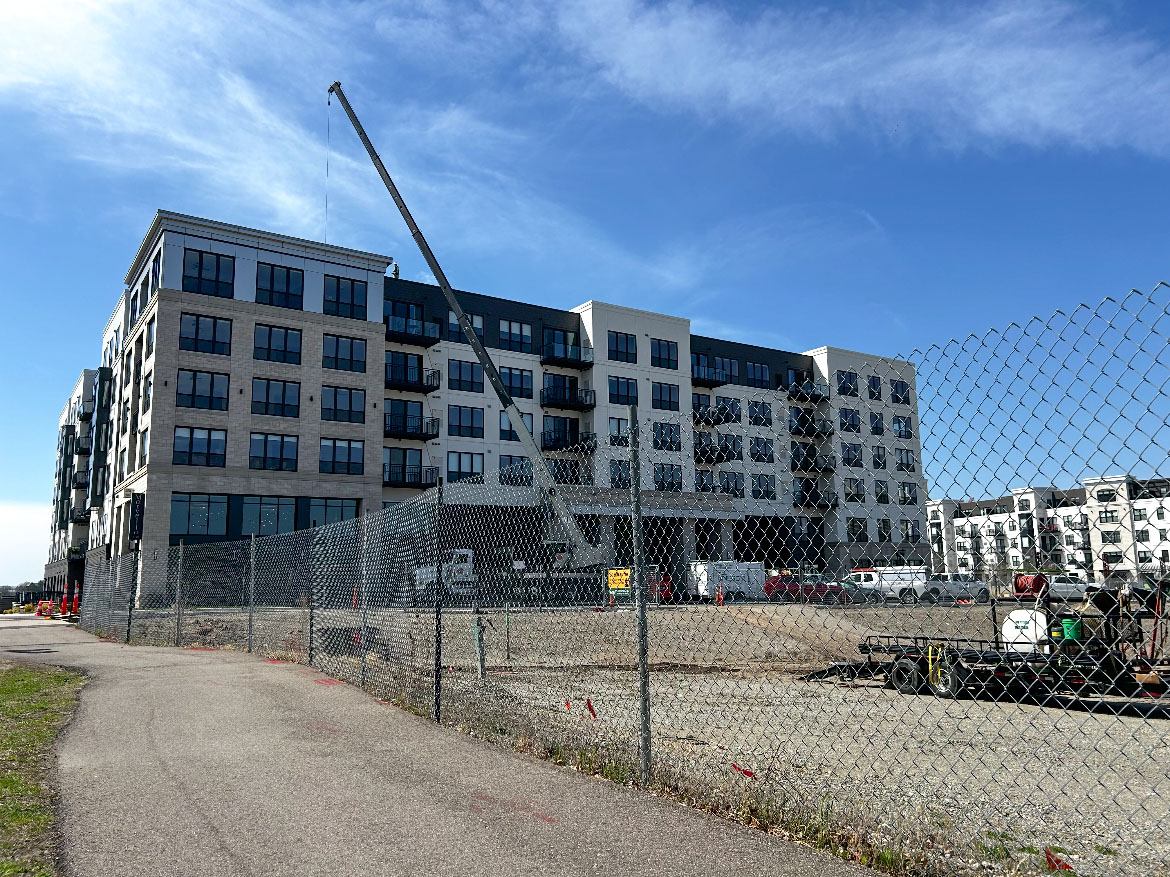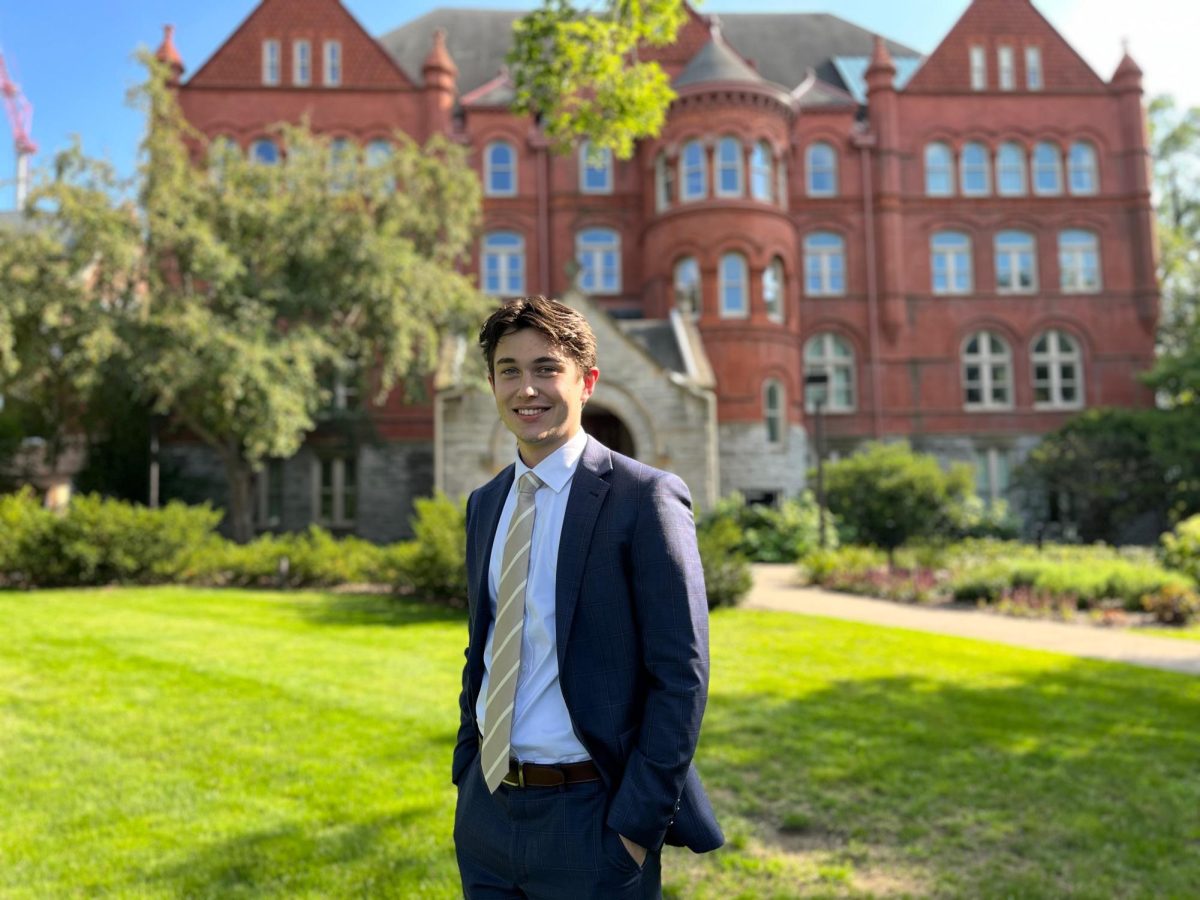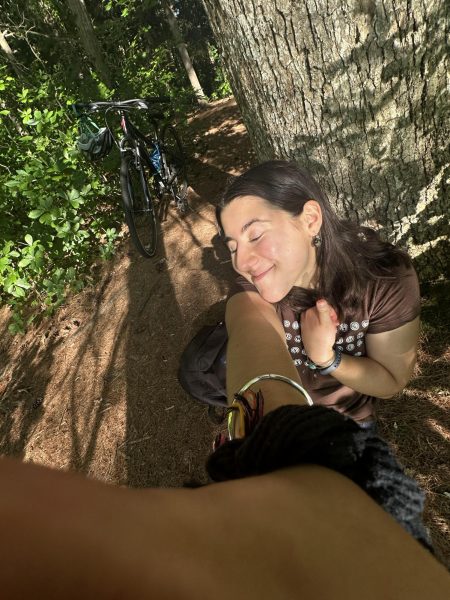Throughout this academic year, students have been speaking out against the planned demolition of the Cultural House, scheduled for summer 2025. On Monday, April 8, the First- Generation, Low-Income Student Union (FSU), supported by the Macalester Undergraduate Workers’ Union (MUWU), held an event for this purpose. This rally, which took place outside of the Cultural House, aimed to bring attention to the history and future of the Cultural House; raise wider support for MUWU, especially among first-generation, low-income students; and start conversations around topics that FSU organizers believe are not discussed enough on campus.
The Cultural House, located at 37 Macalester St., currently houses students in the residential First- Year Course (FYC) “We Demand: Student Power, World Building, and Democratizing Higher Education,” as well as other students who applied to live there. It aims to provide a supportive space for students of color on campus, creating a community that many feel is crucial when attending a predominantly white institution (PWI) such as Macalester.
Before arriving at Macalester, Yamalí Rodas Figueroa ’27 was worried about finding community as a formerly undocumented student at a PWI. Taking the FYC that is housed in the Cultural House has helped them feel part of a community.
“The Cultural House is really important for me [and] a lot of the residents as well [because] building community with people you didn’t think you’d build community with forces you out of your bubble,” Rodas Figueroa said. “I’ve learned so much and just learned to be a human, to be a decent human being there and just show kindness to people.”
One of the most important benefits of the Cultural House for Rodas Figueroa is its function as a space to talk about and be supported in the struggles they face. They tell their housemates about feeling like there isn’t enough support for undocumented students at Macalester, for example, and their housemates are a receptive audience.
“Even though [my housemates] don’t understand my lived experiences, we have built this community of trying to understand and be in solidarity with each other, [so] … they have listened to my struggles,” Rodas Figeuroa said. “People support me in this house.” Despite these functions of the Cultural House, Macalester plans to demolish the building in the summer of 2025. The college cites a lack of space, accessibility and energy efficiency in the current building as the reasoning for this demolition. A new welcome center and residence hall will be built in the Cultural House’s place.
The college plans to move the Cultural House’s current programming to the Lealtad-Suzuki Center for Social Justice, which currently runs the Cultural House, but many believe that this is not enough. “They say that one of the benefits of this renovation will be communal kitchens,” Matté Lopez ’25, co-founder of FSU, said. “Spaces that support BIPOC students are more than just kitchens.”
Lopez and others believe that the Cultural House policies that feel inadequate are nothing new. In her speech at the rally, Lopez detailed the history of the Cultural House to support this point.
The first iteration of the Cultural House was the Black House, which was formed in 1969. That same year, the Expanded Educational Opportunities (EEO) Program, which had a goal of increasing the number of students of color on campus, was created. The program recruited 75 students for the 1969-70 school year, but it underwent budget cuts the following year, and its funds have continuously been cut since, as have the functions of the Cultural House.
From 1969-1972, the Cultural House took form as the Black House, the Hispanic House and the Hebrew House, which was victim to antisemitic vandalism from people off-campus. In 1984, the Black, Hispanic and Native Houses from the EEO period were moved to a couple of rooms on the second floor of what is now the Ruth Stricker Dayton Campus Center.
“Sounds a little bit familiar,” Lopez said.
In 1987, all the cultural houses were consolidated into one, which was located at 34 Campbell Street. Even amongst prevalent racism on campus in the early 1990s, including an Indigenous student receiving racist and sexist hate mail, the Cultural House hosted social and political events. “I talked to an alum the other day, [and] they told me that if something important was happening in the Twin Cities, it was here,” Lopez said.
In 1998, the sole employee of the Office of Multicultural Affairs wrote a progress report on the state of the Cultural House. They detailed cramped office space and a lack of computers and upkeep. They also echoed calls from a few years earlier to move the Cultural House to a more central location rather than keeping it on the outskirts of campus. The school did not follow up on these recommendations to the satisfaction of Cultural House residents.
“Just remember that when the administration and the Strategic Planning Committee tries to tell you that the reason that they’re demolishing the house is because it’s old, the neglect was intentional,” Lopez said.
In a speech following Lopez’s, Rodas Figueroa offered current context to the lack of upkeep, saying that the bathrooms have been leaking all academic year, and it takes a long time for anyone to come fix them. “It’s just so frustrating because I’m sure any other facility in the president’s house they’ll fix immediately,” Rodas Figueroa said.
Joseph Polyak ’26, a MUWU organizer who attended the rally, had previously pointed out that the school had recently purchased a new president’s house for $1.86 million dollars.
“We always have money for a new house, just not for us,” Lopez said.
To conclude her history of the Cultural House, Lopez remarked on the current moment and called the audience to action.
“The Cultural House has gone through a lot of iterations,” she said. “This one feels a little more final.”
“I think this is the first time that Macalester has not made plans or pretended to make plans to replace [the Cultural House] with something,” Lopez continued. “And it’s blatant. They’re getting rid of it right in front of our faces. And that says things. The administration would not do that if they [thought that people would] say anything. And I think so far they’ve been right. Nobody’s talking about this. That’s why I think we need to talk about it more.”
Even though the plans for the demolition of the Cultural House are already set in place, Lopez called on students not to go down without a fight. She encourages them to keep talking about the past and present significance of the Cultural House, to hold the college accountable to its promise of continuing to support students of color after the Cultural House is gone and to build community with each other to support this work.
“You cannot change it; that’s the truth,” Lopez said. “But we don’t have to let it go silently.”


